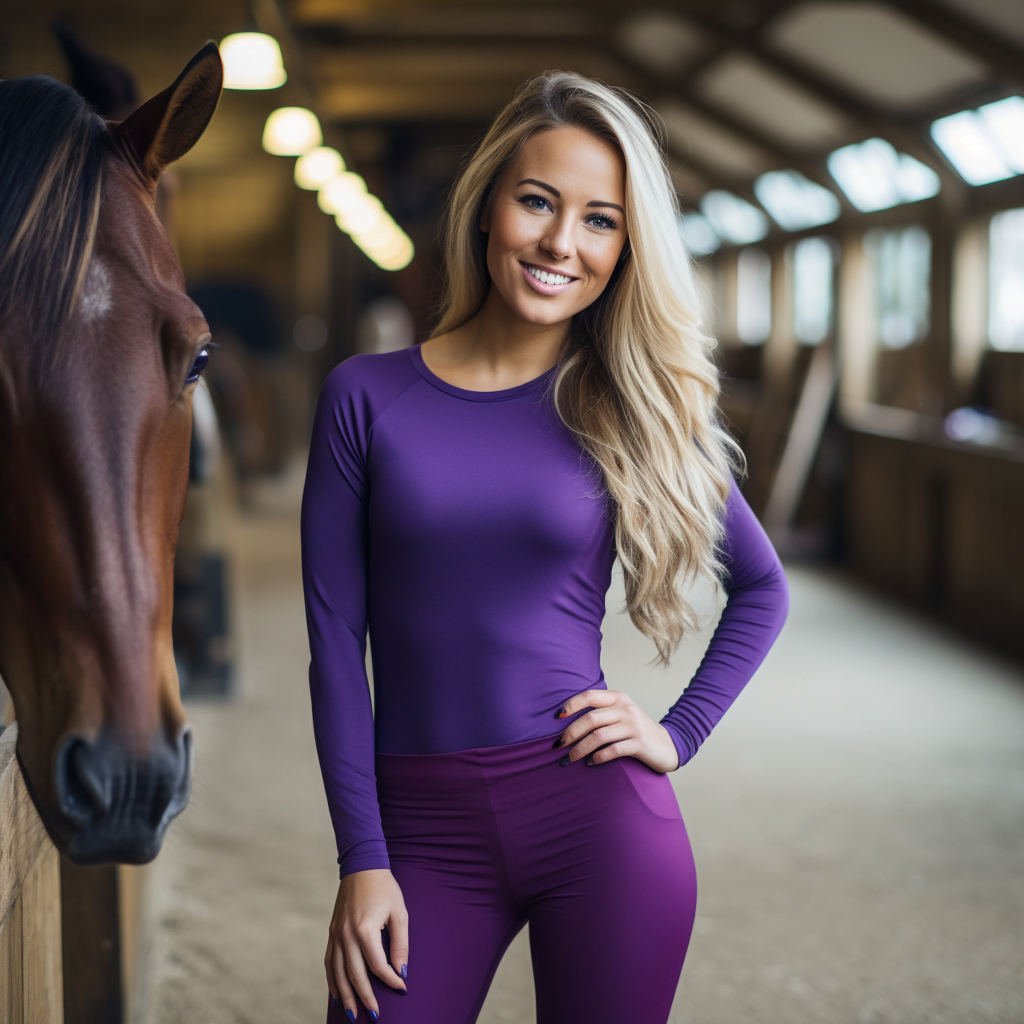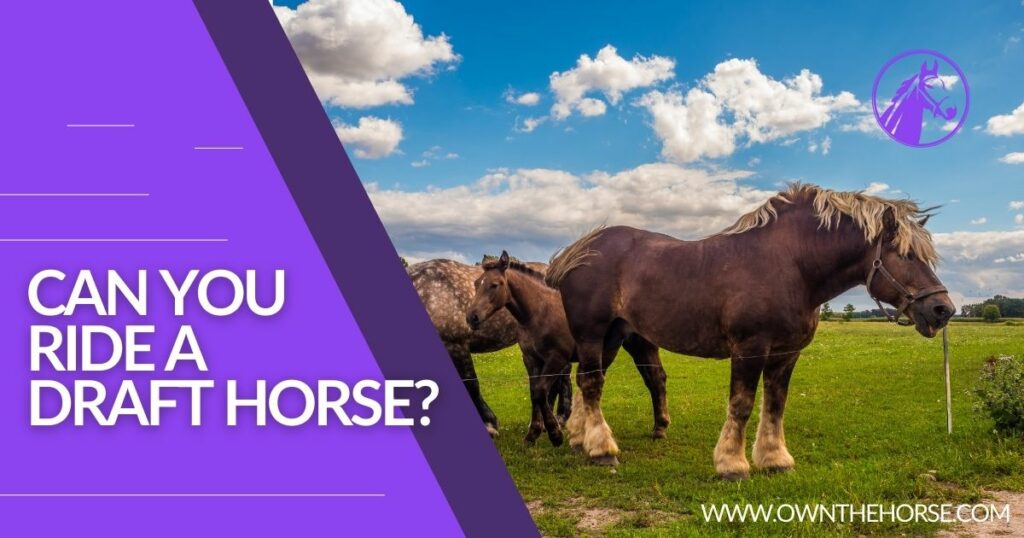As an Amazon Associate we earn from qualifying purchases.
Draft horses are known for being powerful, sure-footed work animals. But can you actually ride them? While some breeds, such as the Shire horse, were bred for agriculture at first, they have now found a place in recreational activities such as showmanship, driving, and riding. So, can you ride a draft horse? The short answer is yes – but it is important to understand the nuances of doing so for the best experience.
What is a Draft Horse?
A draft horse is a breed of horse specially bred to perform hard and heavy work. Characterised by their size, strength and calm disposition, they were used historically to pull equipment and haul carriages. Many draft horses are descendants of the now extinct Great Horse which was used in battle by knights in medieval Europe. Modern Draft Horses are used primarily in farming, logging and recreational activities such as showmanship, driving and riding. They come in a range of sizes and weights, typically standing 16 hands (64 inches/162 cm) tall at the withers and weighing an average of 1,500 pounds (680 kg).
For more information on draft horses follow this link.
What Makes Draft Horses Good for Riding?
Draft horses are large in size, standing 16 hands high and weighing an average of 1500 pounds. This makes them look intimidating, but draft horses are known for being gentle under saddle, with an even temperament. As related by Dr. Susan E. Harris, a Certified Horsemanship Association professional horseman and regularly contributing author of Horse Riding Magazine, many draft horse breeds have been selectively bred to be calm, willing, and trainable.
READ MORE: Can Mustangs be Tamed?
The athletic ability of draft horses is also impressive. Draft horses often display a unique, cadenced four-beat gait called a “pacing” gait, where their front and back legs move together in pairs. This rhythmical movement is easier for beginners who may not yet have developed the full coordination required to ride other breeds. When approached with patience and expertise, the draft horse can be trained to extend into the faster gaits, making it an enjoyable choice for experienced riders.
What Should You Consider When Riding a Draft Horse?
Riding a draft horse comes with its own unique set of considerations. Compared to lighter breeds, draft horses are heavier and have a much stronger pull. Beginning riders should therefore be prepared for the increased effort of controlling larger animals and know how to handle them safely in difficult situations.
It is also essential to understand the specific Breed of horse. As each breed of draft horse was bred for different types of work, different features may be brought into training. For example, the Belgian Draft Horse may not naturally be as forward-thinking as other draft horses and needs very distinct cues from the rider.
Having an experienced coach or equestrian nearby can help to provide the necessary training advice when riding a draft horse.
Climbing Aboard a Draft Horse
Given their sheer size, mounting a draft horse can be a challenge. When mounted, the rider will likely be significantly higher off the ground than when they’re on a lighter breed. For this reason, mounting blocks are often used. These are stable platforms that sit snugly up against the horse, allowing the rider to climb on safely.
Draft horses should never be ridden without the proper attire, which includes a riding hat, boots, and breeches. An English saddle should also be used, as it offers the best support for both horse and rider.
Can You Ride a Draft Horse – Final Thoughts
Draft horses are versatile animals, bred to be powerful, sure-footed work animals. They can be used for many recreational activities, including riding. Riding a draft horse is a unique experience due to the size, weight, and breed of the horse. New riders should start off with the necessary safety precautions and enlist the help of an experienced coach to get the best experience. With careful consideration and dedication, riding a draft horse can be a pleasurable and rewarding experience.
Amazon and the Amazon logo are trademarks of Amazon.com, Inc, or its affiliates.

Hey there, I’m Jasmine! I’m a total horse fanatic and have been working with these amazing animals for as long as I can remember. I’m passionate about sharing my love for horses with others and helping them learn more about these majestic creatures. As a professional horse trainer and riding instructor, I’ve developed a deep understanding of equine science and am committed to the welfare of horses. That’s why I founded OwnTheHorse.com, a blog where I share my knowledge and insights with fellow horse enthusiasts. I love connecting with my readers and building a friendly community of horse lovers. Whether you’re a seasoned equestrian or just starting out, I’m here to help and inspire you. Above all, I’m a friendly and compassionate person who truly cares about the well-being of horses and their human companions.

